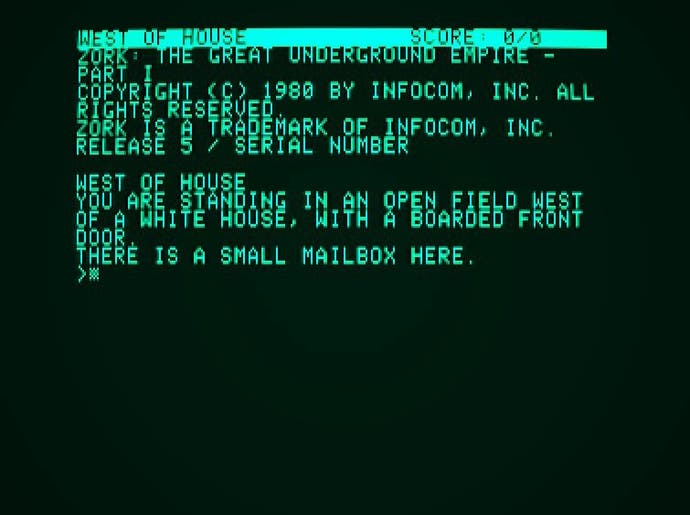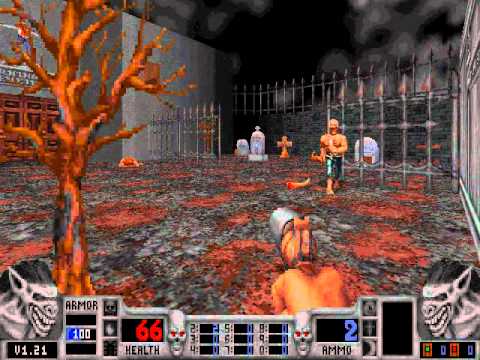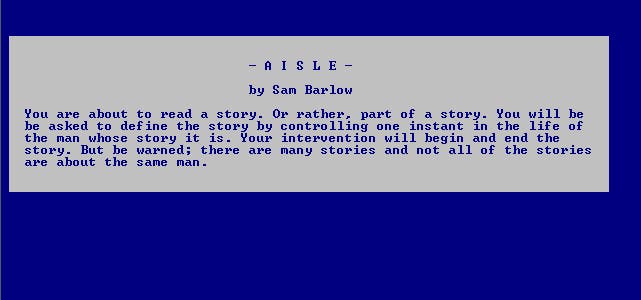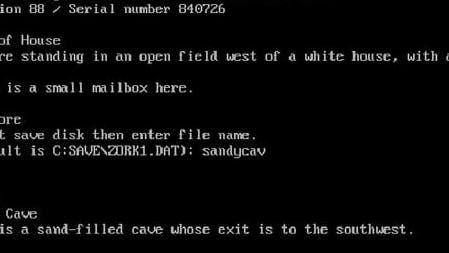Reap your reward: cursed games illuminate the ghosts of our past
PALE LUNA SMILES WIDE.
I heard a strange story a while back about a DOS game passed around California decades ago. And that unlike any of those wild and sometimes sinister adventure games from that era, someone had traced out its instructions towards something unspeakable. This title was allegedly lost forever in a floppy disc.
And it reminded me of an era when games felt steeped in mystery and madness, before guides and trailers and press releases. When starting a new game felt like entering another world and how occasionally you'd find something nestled at the bottom of a bargain bin that gave you nightmares, and no one else had ever heard of it.
Named Pale Luna, this enigmatic game followed '80s text adventure conventions: blank screen, crisp white text characters, in the vein of Zork and The Lurking Horror. You began in a moonlit room containing gold, a shovel, and a rope, then set off to "reap your reward". You then trundled through an incoherent text-based woodland using compass directions.

When you took the "wrong" way the game crashed, requiring a PC reboot. In a grim march of trial and error, akin to the power-runners and guides writers and super-fans of our age, one lone Pale Luna fan kept going until he reached the next screen. Hitherto unseen by any other player, it read:
There are no paths.
PALE LUNA SMILES WIDE.
The ground is soft.
PALE LUNA SMILES WIDE.
Here.
Command?
He worked out the winning control combination: DIG HOLE, DROP GOLD, then FILL HOLE, unveiling a set of coordinates in nearby Lassen Volcanic Park. Following the game's directions through the real-life forest, he came to a patch of uneven dirt, where he immediately exposed the decomposing head of a girl.
Today, an online search will find you copies of Pale Luna, spread among Reddit and retro game archives. But of course, despite this, Pale Luna is a lie - although its game, after the story, is real and playable. Such are the whims of a post-truth world.
Created as a Creepypasta - a form of internet horror-related legend - its first incarnation was a microfiction written by user MizuZero in 2005. It then spiraled out among Reddit, Youtube and programmers who have created "copies" of the game.
Pale Luna is a made-up story, but like all folklore and urban legends, it tells certain truths and also draws from other games collectively imagined, like Creepypasta Killswitch, which revolves around a made-up game which included a mine full of demons and poorly rendered MIDI versions of Czech folk songs. A game that deleted itself once completed.

These Creepypastas highlight the wild by-gone days of the internet and gaming. They compel us less because of their grisly endings, but because they are familiar, reminding us of odd titles we played and couldn't comprehend. They draw from tropes of gaming culture: the determined player, the eerily rendered graphics glitch, the game that punishes the player for their perceived transgressions, or the terrible secret the games creator lodged within the code.
They are a stark remnant of the deteriorating period of physical media, where things could disappear. When a song, an actor, a line, could haunt you because there was no means of finding them. A world that still had truly unknowable quantities, where the bulk of our contained knowledge was not a single tap away. In our generation of Cloud backup and digital downloads, there is something fragile about lone floppies exchanging hands. The age where games can be lost forever is gone.
Let's also consider the possibilities of a Pale Luna-esque game circulating around somewhere. Sure, that title is a fake, and a bombastic one at that, but could there have been a game at some point, conceived by a murderer? What other dark codes lie within those floppy discs sealed in beneath the San Diego desert? Could you find that nightmare game, boxed up in a yard sale beneath kettle leads and stained Care Bears? Who knows what is nestled at the bottom of that proverbial bargain bin, waiting to be found.
It appeals to those parts of us that wonder about games lost, because they are lesser explored territories - places still uncharted. In our time of seemingly infinite knowledge, this becomes a rare commodity.

Pale Luna stirs up the mystery of old PC games; plugging in bizarre floppy disks and CDs garnered from WHSmith and petrol stations. While plenty of them were utter abominations, there is a beauty to these ancient titles. They seemed crafted with all the care and earnest creativity that forms DOOM mods and interactive fiction.
They hark back to an era before the behemoth video game creators, the armies of developers tied up to the AAA ship. There are many developers that embrace that ethos, but they are operating in a sea now full of titans, and an audience bred on their steely creations.
It seems like a sacred period, like the burning bush that arose before the neon-lit megachurch. A period where games were experimental, conjured up by weirdos in dark rooms, sharing outlandish visions of endless death.
Pale Luna brings back one of the first games I ever played, - on a shoddy work laptop reappropriated for "schoolwork" - a pirate copy of Blood 1. I spent ages poking shuffling zomboids with a pitchfork, dynamite and blazing guns. Like Doom, Blood comprised an unnerving hellscape of lurid colours and ultra-violence. My super-goth friends and I were captivated.
We talked about its bizarre bugs and rooms we'd stumbled into, everything incoherent because we were unaware of game logic. These games were enigmatic for us, because they were unknown territory, not yet shaped into a familiar genre and convention.
There weren't a lot of walkthroughs or guides back then. You got through tough sections often by chatting to someone, or digging up some obscure Notepad-esque file furrowed away on the internet. Or you remained lodged in that area forever - its secrets sealed away.
I have no desire to return to those days, modern games have advanced the medium considerably. But Pale Luna and other games Creepypasta capture that hallowed time before, when gaming was kind of feral. As if capricious gods had granted them to us, and their meaning too, was inscrutable.
It's a magic still retained by a lot of modern text games. Take Sam Barlow's Aisle, where you visit a supermarket in a maddening Groundhog day-esque loop. There's also the much later released Stories Untold, where you play out an anthology of retro-inspired horror stories. These captured that strangeness for me, that sense of dislocation. Text games played out in your head are more personal than the graphics-led titles that outpaced them. These games linger.
There was a sense of stakes too, that is replicated in Undertale, which leaves your crimes in the background; your actions lingering out into a brutal eternity of replays. Like creepypasta Killswitch, it does not care for player entitlement. You are playing inside a landscape molded by someone - or something - else.
Or Knights of the Old Republic, which shuns any steering into morality. You can be evil and that's surprising, sort of like in the old Hobbit text game on the Spectrum where you could assault your hobbit friends, if you so desired.
A game that is entertaining, but not subject to your whims or pervading moral conventions. A title that played you a little, not the other way round. It makes games feel even more otherworldly, and less like clean vehicles you can dismantle and complete, each shiny corner ticked away. Creepypastas like Pale Luna keep those old games alive in a sense. Carving them into our collective imaginations, which still resound with the ghosts of yesteryear.


